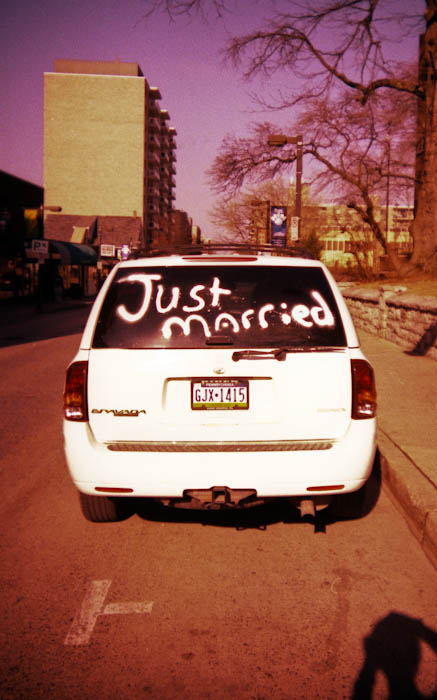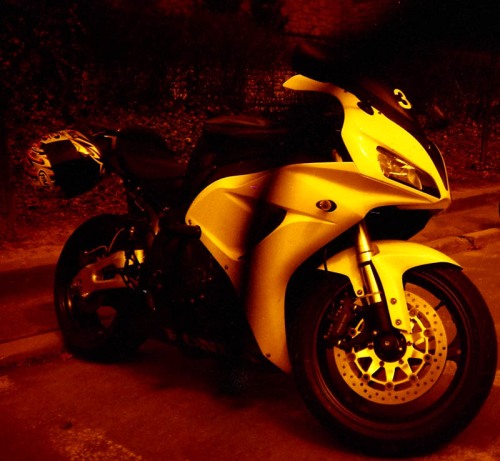
Am I lowering my standards?
After my repeated CVS developing disasters (preceded by my CVS scanning disasters), I’ve finally given up on CVS One-Hour Photo Processing. There’s something so incredibly convenient about having your negatives developed while you wait (they put a develop-only through in about twenty minutes), but when they are routinely destroying rolls of your film, it quickly becomes a problem. Now that I’m taking my film to the local professional shop, the dust and scratch problems have literally disappeared. While the jump from $2.19 to $3 per roll is really hurting my wallet, the real downside is waiting for my film to come back. They only run C-41 when enough piles up, which usually comes to about once a week. Last time I walked in literally ten minutes before they were running film and had my negatives back in twenty-five minutes. The next roll I dropped off has been there for five days, and will hopefully be done tomorrow. As a result, the blog has become a bit sporadic, and when a roll doesn’t work out (for example, because I’m shooting slide film I’ve never cross processed before in a camera with a lens I’ve (almost) never used before and another that I’d not only used before but cost $3.71), it can mean a dry week.
As is my usually style, I’ve been occasionally going back to these for a week. letting them grow on me and seeing if anything I really like emerges. Unfortunately, nothing did. I do think this is an interesting shot though (if just for the documentary value), and it’s also an interesting example of what happens when you cross process. These are the “natural” colors. This is not a Photoshop action or something of that nature (my post-processing consisted of a crop, a little highlight recovery, and a slight “s” in curves to boost contrast, along with the sharpening that is a necessity for every negative scan). Cross-processed films tend to turn either magenta or green to varying extents depending on the film used and the exposure, and this is an example of a strong magenta shift. You can also see how it varies across the tonal range: The highlights (the back of the SUV) have virtually no shift, the lights (brighter portions of the pavement and sky) have a minimal shift, and the darks (farther edges of the pavement and sky) have a strong shift toward magenta.
Also, note that I appear in the image. A decidedly postmodern nod in an otherwise pointless picture.
Fuji Sensia 100 shot in a Fuji Smart Shot II (which is ghetto beyond all imagining, and please be aware that the camera in that image is the “deluxe” model, which mine is not) cross-processed C-41 (and not ruined, but unfortunately also pretty uninteresting).







